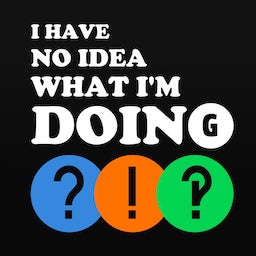I Have No Idea What I'm Doing
-

- Hosted by Andrew Huster and Aaron LM Goodwin
Join us on a wondrous journey through whatever’s on our minds this week. We have no idea what we’re doing. But we’re trying.
Only boxcars are good, all other freight sucks.
Our Goodstuff Patreon Subscribers and listeners just like you! Support your favorite podcasts directly to get access to the discord and more.

Today Andrew is joined by Friend of the Show Liz to discuss rail freight transport, and other, lesser, forms of freight transport.
This is the first of a new format of special bonus “Pop Off” episodes that will be premiering first on Patreon, so support Goodstuff today to get new episodes as soon as they come out!
Types of Freight
Containerized Freight
Allows for “intermodal” transport, but almost always requires trucks for the last mile (the drayage portion). Also requires cranes or other specialized lifting equipment.
Trailer-on-Flatcar
Also requires trucks for the last mile, and also requires cranes or other lifting equipment. Trailer-on-flatcar also wastes space relative to a roadrailer or containerized freight. The space between the trailer and flatcar is essentially unused. Double-stack intermodal container cars use this entire space. On roadrailers, this space is just the usual space under the railcar that is not typically used.
Roadrailer
Requires trucks for the last mile, but, crucially, requires minimal special equipment. Trailers can be driven right into the yard and connected to bogies.
However, roadrailer trailers are considerably heavier than conventional semi trailers because they must bear the weight of an entire train. This concept is dying out anyway.
Boxcars
Boxcars are the classic, and they kind of got it right. Can be delivered by rail to the end customer (assuming they have a spur). Doors on each side allow for easy loading and unloading. No need for specialized lifting equipment. Can be shuttled around easily with a railcar mover (which is comparable to a yard truck or some forklifts).
The Problem With Boxcars
Boxcars must be loaded and unloaded and are not really intermodal. This is a process called “break bulk” freight and it is out of fashion because of how inefficient it is considered versus loading an intermodal container from a ship directly onto a truck or train, which requires no unloading of any kind.
For some uses, especially of bulk cargo, containers remain unpopular, because they simply don’t make as much sense. It’s much easier to use tank cars to transport liquids or gas than containerized tanks (which exist, but are needlessly complex), and transporting bulk materials like rock or coal, etc., rarely requires containerization, and can go into specialized hopper or gondola cars.
Rail Freight Is A Land Of Contrasts
One of the great things about rail freight, though, is the variety of cars that can be used to transport goods. These include:
- Boxcars
- Refrigerator cars (“reefers”)
- Hoppers
- Covered hoppers
- Gondolas
- Centerbeam cars
- Flatcars
- Well cars
And all of these can be combined in any combination on a single train and hauled with only a few locomotives. Rail freight transport is often far more efficient than truck haulage. The longest train ever, an iron ore train ran by BHP Billton in Australia, had a weight of 99,734 metric tons, hauling 82,000 tonnes of ore in 682 cars along 7.3 km. It used 8 locomotives, with a total power of 35,200 hp. This would equivalently require 4,017 semi trucks with a required 2,048,670 hp. Imagine the fuel consumption difference.
Long trains in the US can reach about 2.29 miles across 180 cars, typically hauled by 4 locomotives.
UP Shuts Down Cold Connect - Railway Age
Staggers Act Lessons Remain Relevant in 2020 - Railway Age
Well There’s Your Problem - Episode 7: Lac-Megantic - YouTube